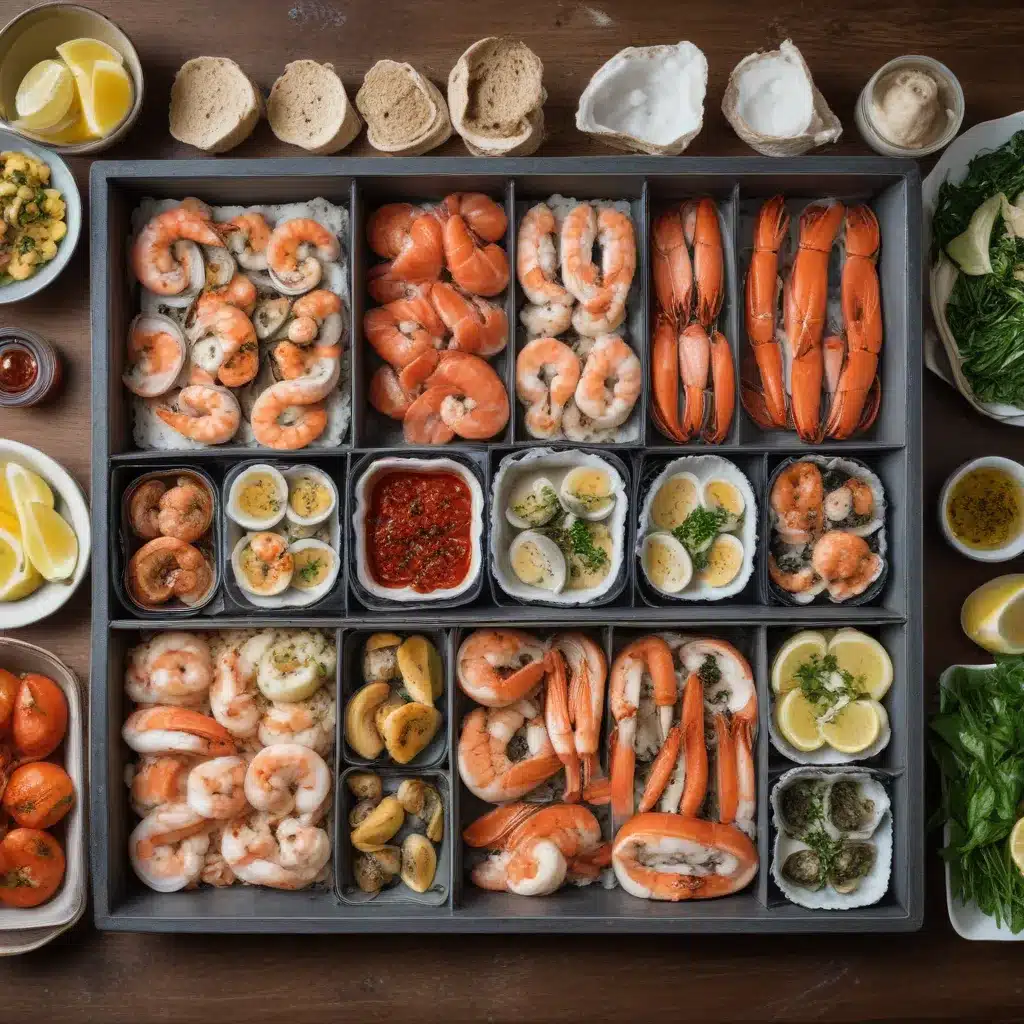
Whether you’re a seasoned seafood connoisseur or a culinary adventurer, the key to unlocking the true potential of your cod, salmon, shrimp, or any other ocean delicacy lies in mastering the art of preservation. At Fish Tales Cafe, we’re passionate about empowering home cooks and professional chefs alike to elevate their seafood cuisine through the strategic application of storage best practices.
Seafood Preservation Strategies
Refrigeration Best Practices
Proper refrigeration is the foundation of seafood storage. Maintain your refrigerator at a consistent temperature of 40°F (4°C) or below to inhibit the growth of harmful bacteria. When storing fresh fish or shellfish, keep them on the bottom shelf, where temperatures are coldest, and ensure they’re placed in sealed containers or bags to prevent cross-contamination. For best quality, consume refrigerated seafood within 1-2 days of purchase.
Freezing Techniques
Freezing is a remarkable way to extend the shelf life of seafood while preserving its nutritional value and flavor. To freeze fish or shellfish, start by wrapping it tightly in moisture-vapor resistant packaging, such as heavy-duty plastic wrap or freezer-safe bags. Remove as much air as possible to prevent freezer burn. Aim to freeze seafood at 0°F (-18°C) or below, and maintain this temperature to ensure optimal quality. Properly frozen seafood can remain safe indefinitely, though for best taste and texture, it’s recommended to consume it within 3-6 months.
Optimal Storage Conditions
Creating the ideal environment for your seafood is essential. Avoid storing it near strong-smelling foods, as seafood can easily absorb unwanted odors. Keep the refrigerator and freezer clean and free of spills or drips that could lead to cross-contamination. Monitor temperatures regularly, and be vigilant about power outages that could compromise the cold chain.
Seafood Handling Protocols
Receiving and Inspection
When purchasing seafood, thoroughly inspect it for signs of freshness. Fresh cod, for example, should have firm, shiny flesh, clear eyes, and a mild, ocean-like aroma. Reject any items that appear discolored, slimy, or have a strong, unpleasant odor. If possible, ask your supplier for details on the catch date and handling methods to ensure you’re receiving the highest quality product.
Cleaning and Preparation
Proper cleaning and preparation techniques are crucial for maintaining seafood’s quality and safety. Always wash your hands, utensils, and work surfaces before handling seafood to prevent cross-contamination. When cleaning fish, start by rinsing under cold running water, then pat dry with paper towels. For shellfish, scrub the shells and debeard mussels or clams before cooking.
Cooking Considerations
Seafood must be cooked to an internal temperature of 145°F (63°C) to destroy any potentially harmful bacteria. Use a reliable food thermometer to ensure proper doneness, and never rely solely on visual cues. When cooking in batches, maintain the appropriate oil or liquid temperature to prevent overcooking or undercooking.
Flavor Profiles in Seafood
Marinades and Seasonings
Elevate the natural flavors of seafood by experimenting with a variety of marinades and seasonings. For cod, a simple lemon-herb marinade can add brightness and complexity. Pair shrimp with bold spices like chili powder, cumin, and garlic for a touch of heat. Get creative with global influences, such as an Asian-inspired soy sauce and ginger marinade or a Mediterranean olive oil, lemon, and oregano blend.
Sauce Development
Sauces can be the perfect complement to seafood, adding creaminess, acidity, or richness to the dish. Master the art of emulsification to create luscious, velvety sauces, such as a classic beurre blanc or a zesty citrus beurre blanc for salmon. For a gluten-free option, a cornstarch-thickened or vegetable-based sauce can be an excellent choice.
Plating and Presentation
Transform your seafood dishes into true culinary masterpieces through thoughtful plating and presentation. Experiment with creative plate designs, such as arranging shrimp in a spiral or fanning out cod fillets for a visually striking display. Elevate your creations with vibrant garnishes, like fresh herbs, citrus wedges, or edible flowers.
Nutritional Benefits of Seafood
Macronutrient Composition
Seafood is a remarkable source of high-quality protein, with cod providing approximately 15 grams per 3.5-ounce serving. Many types of seafood, such as salmon and trout, also contain ample amounts of omega-3 fatty acids, which are essential for heart health and brain function.
Micronutrient Diversity
In addition to macronutrients, seafood is rich in a variety of essential vitamins and minerals. Cod, for example, is an excellent source of vitamin B12, selenium, and phosphorus, all of which play crucial roles in various bodily processes. Shellfish, like oysters and mussels, are particularly high in zinc, a powerful antioxidant that supports the immune system.
Sustainability in Seafood
Sourcing Responsibly
As seafood enthusiasts, it’s important to consider the environmental impact of our culinary choices. When possible, opt for sustainably farmed or wild-caught seafood from reputable sources that prioritize ethical and eco-friendly practices. This not only supports the long-term health of our oceans but also ensures the continued availability of these precious resources.
Minimizing Waste
To further enhance the sustainability of your seafood cuisine, focus on minimizing waste by utilizing the entire catch. Incorporate fish bones and heads into flavorful broths or stocks, and explore creative uses for seafood trimmings, such as in fish cakes or seafood sausages. By embracing the whole animal, you can maximize the value of your seafood and reduce your environmental footprint.
By harnessing the power of proper storage techniques, you can unlock the true potential of your seafood ingredients and elevate your culinary creations to new heights. Whether you’re preparing a classic cod dish or experimenting with global seafood traditions, these principles will ensure that your seafood cuisine remains fresh, flavorful, and imbued with the nutritional benefits that make it a culinary treasure. Explore the wonders of the sea and indulge in the mouthwatering delights that await at Fish Tales Cafe.

